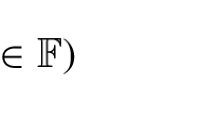Abstract
We study extensions of p-local finite groups where the kernel is a p-group. In particular, we construct examples of saturated fusion systems \({\mathcal{F}}\) which do not come from finite groups, but which have normal p-subgroups \({A \vartriangleleft \mathcal{F}}\) such that \({\mathcal{F}/A}\) is the fusion system of a finite group. One of the tools used to do this is the concept of a “transporter system”, which is modelled on the transporter category of a finite group, and is more general than a linking system.
Similar content being viewed by others
References
Bousfield, P., Kan, D.: Homotopy limits, completions, and localizations. In: Lecture Notes in Mathematics, vol. 304. Springer, Berlin (1972)
Broto C., Castellana N., Grodal J., Levi R. and Oliver B. (2005). Subgroup families controlling p-local finite groups. Proc. Lond. Math. Soc. 91: 325–354
Broto, C., Castellana, N., Grodal, J., Levi, R., Oliver, B.: Extensions of p-local finite groups. Trans. Am. Math. Soc. (to appear) (2007)
Broto C., Levi R. and Oliver B. (2003). Homotopy equivalences of p-completed classifying spaces of finite groups. Invent. math. 151: 611–664
Broto C., Levi R. and Oliver B. (2003). The homotopy theory of fusion systems. J. Am. Math. Soc. 16: 779–856
Broto C., Levi R. and Oliver B. (2007). Discrete models for the p-local homotopy theory of compact Lie groups. Geom. Topol. 11: 315–427
Gabriel P. and Zisman M. (1967). Calculus of Fractions and Homotopy Theory. Springer, Berlin
Goerss P. and Jardine R. (1999). Simplicial Homotopy Theory. Birkhäuser, Basel
Gorenstein, D.: Finite Groups. Harper & Row, New York (1968)
Hoff G. (1994). Cohomologies et extensions de categories. Math Scand. 74: 191–207
Jackowski S., McClure J. and Oliver B. (1992). Homotopy classification of self-maps of BG via G-actions. Ann. Math. 135: 184–270
May P. (1967). Simplicial Objects in Algebraic Topology. Van Nostrand, Princeton
Oliver B. (1994). Higher limits via Steinberg representations. Comm. Algebra 22: 1381–1393
Oliver B. (2004). Equivalences of classifying spaces completed at odd primes. Math Proc. Camb. Phil. Soc. 137: 321–347
Puig, Ll.: Unpublished notes (ca. 1990)
Quillen D. (1973). Algebraic K-theory I. Lect. Notes Math. 341: 77–139
Ruiz, A.: Exotic subsystems of finite index in the fusion systems of general linear groups over finite fields. J. Lond. Math. Soc. (to appear)
Stancu, R.: Equivalent definitions of fusion systems (preprint)
Weibel C. (1994). An introduction to homological algebra. Cambridge University Press, London
Author information
Authors and Affiliations
Corresponding author
Additional information
B. Oliver is partially supported by UMR 7539 of the CNRS.
J. Ventura is partially supported by FCT/POCTI/FEDER and grant PDCT/MAT/58497/2004.
Rights and permissions
About this article
Cite this article
Oliver, B., Ventura, J. Extensions of linking systems with p-group kernel. Math. Ann. 338, 983–1043 (2007). https://doi.org/10.1007/s00208-007-0104-4
Received:
Revised:
Published:
Issue Date:
DOI: https://doi.org/10.1007/s00208-007-0104-4



